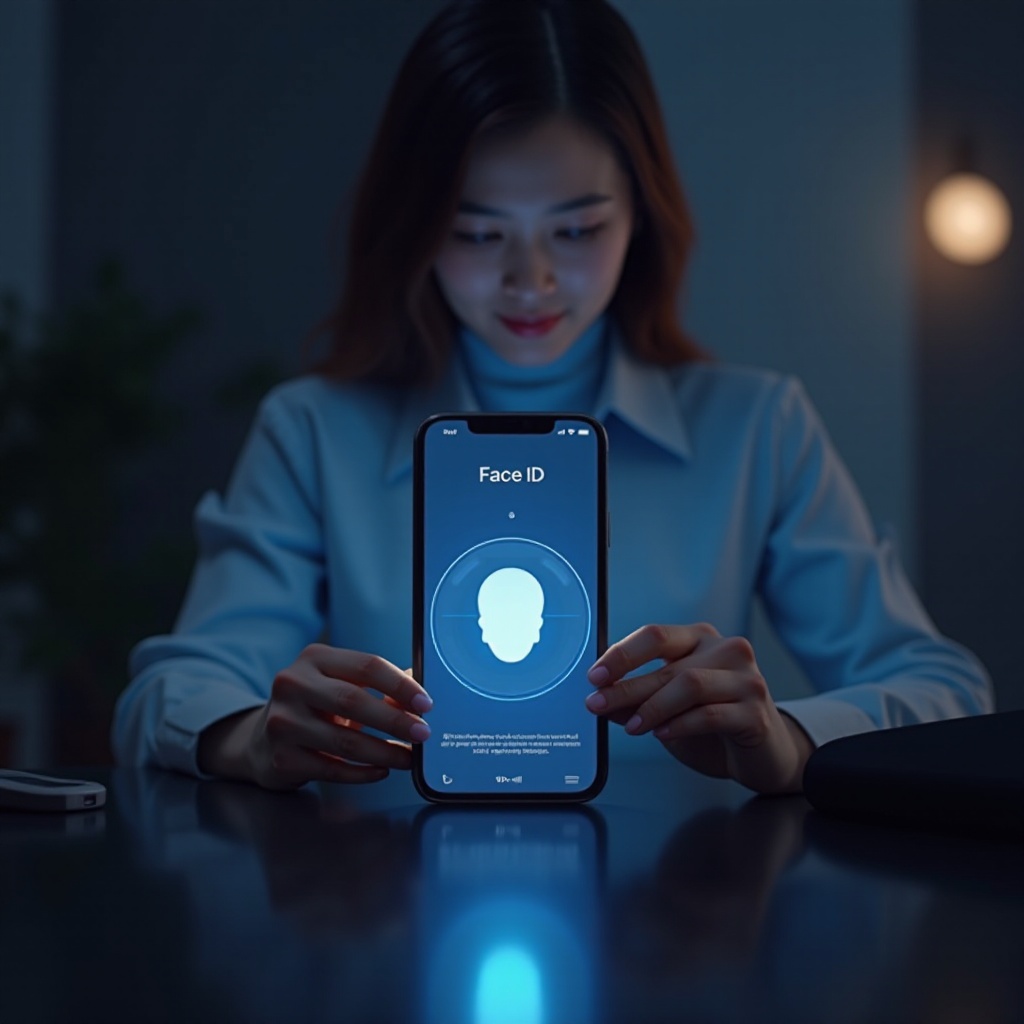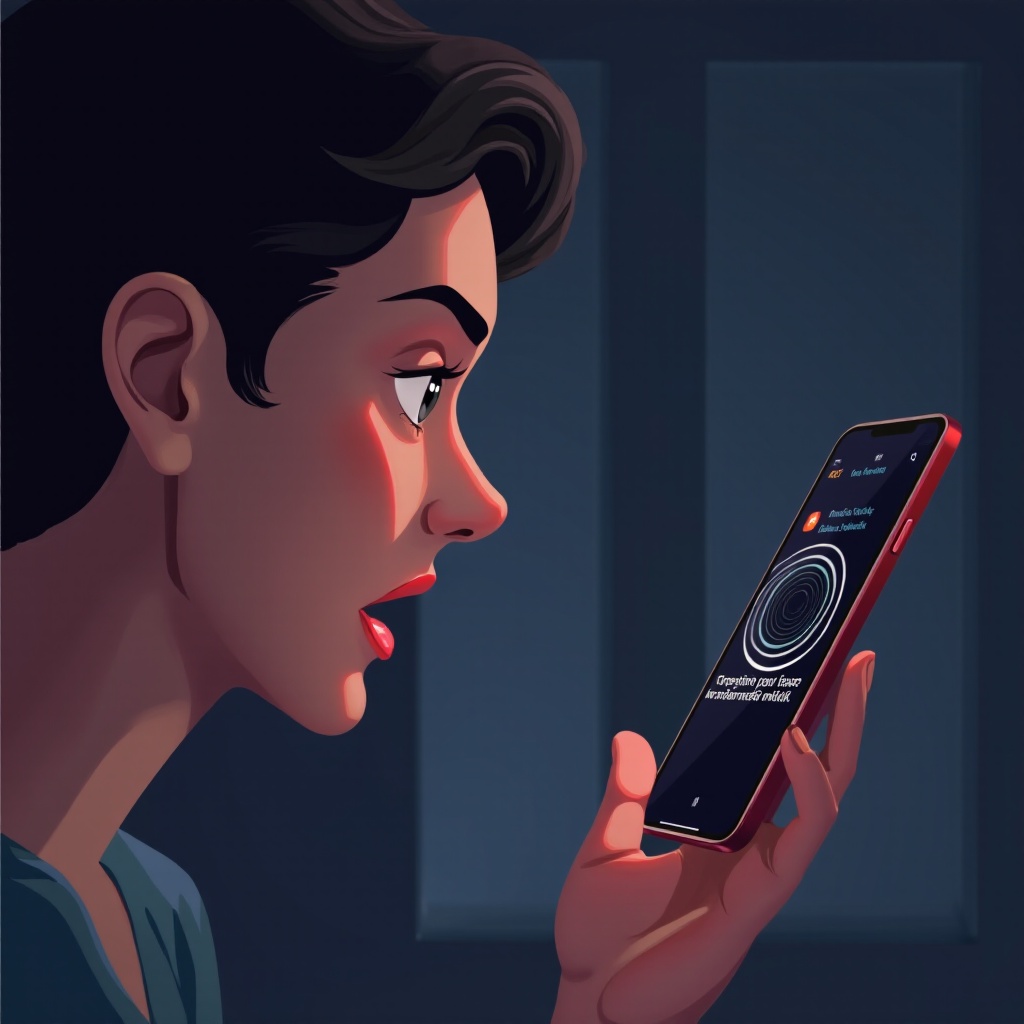Introduction
Face ID technology, a standout feature in Apple’s ecosystem, offers unparalleled convenience and security. It’s designed to seamlessly identify users, allowing effortless device unlocking and app access. However, like any advanced technology, it can occasionally falter, leaving users puzzled and frustrated. This comprehensive guide delves into the possible causes of Face ID malfunctions and provides actionable steps to resolve and prevent these issues.

Understanding Face ID Technology
Grasping how Face ID works can empower users to troubleshoot effectively. At its core, Face ID operates using a sophisticated array of sensors and cameras, including the TrueDepth camera system, which projects over 30,000 invisible dots onto the face to map its unique features. This map is further analyzed using infrared imaging, enabling the device to recognize faces even in low light. When this technology fails, the reasons often stem from either software errors or hardware faults, which disrupt this intricate process.
When addressing Face ID issues, an understanding of its reliance on machine learning is essential. The technology adapts over time to facial changes, such as growing a beard or altering hairstyle. However, significant and abrupt changes can temporarily disrupt its learning algorithm, causing recognition errors.
Common Reasons Why Face ID Doesn’t Work
Several factors can undermine the functionality of Face ID, leading to frustration:
-
Dirt or Smudges on the Sensor: Obstructions on the TrueDepth camera can disrupt the facial recognition process.
-
Inadequate or Changing Lighting: Face ID’s reliance on infrared means that drastic lighting changes can interfere with recognition.
-
Physical Changes in Appearance: Sudden changes in appearance, including facial hair changes or wearing accessories like hats and glasses, can confuse the system.
-
Software Bugs or Outdated Versions: Software lags and compatibility issues can impair the facial recognition function.
-
Hardware Damage: Physical damage to the device, such as impact or water exposure, often leads to misaligned or dysfunctional Face ID sensors.
Basic Troubleshooting Steps
Starting with simple troubleshooting steps can often resolve Face ID issues without the need for technical intervention.
Restart Your Device
Restarting your device can reset the Face ID system, eliminating temporary glitches. This action serves as a preliminary troubleshooting step to refresh software processes.
Update Your Software
Ensure your device’s operating system is current. Software updates frequently contain bug fixes and performance enhancements that are crucial for keeping Face ID operating smoothly. Check for updates via ‘Settings’ > ‘General’ > ‘Software Update’.
Check Face ID Settings
Verify your Face ID settings by navigating to ‘Settings’ > ‘Face ID & Passcode’. Ensure that Face ID is enabled and configured for various actions like device unlocking, Apple Pay, and app authentication.
Advanced Solutions for Face ID Problems
If basic solutions prove inadequate, consider these advanced steps:
Reset Face ID Data
Resetting Face ID can recalibrate facial recognition. To do this, go to ‘Settings’ > ‘Face ID & Passcode’ > ‘Reset Face ID’ and follow the setup instructions anew.
Restore Device Settings
Restoring your device’s settings can rectify persistent problems without deleting personal data. Access this by going to ‘Settings’ > ‘General’ > ‘Reset’ > ‘Reset All Settings’.
Seek Professional Assistance
In cases of hardware damage or if advanced troubleshooting fails, professional support is necessary. Contact Apple Support or visit an authorized service provider for diagnosis and potential repairs.

How to Prevent Face ID Malfunctions
Preventive care ensures the longevity and reliability of Face ID.
- Regular Cleaning: Maintain a clean and unobstructed TrueDepth camera.
- Update Regularly: Keep your iOS version up-to-date to benefit from the latest enhancements and security patches.
- Consistent Lighting and Positioning: Set up and use Face ID in similar lighting conditions and maintain consistent positioning for more accurate recognition.
These measures contribute to the consistent performance of Face ID.
The Role of Software in Face ID Performance
Software plays a critical role in the efficacy of Face ID. Apple continuously updates the facial recognition algorithm to enhance adaptability to subtle user appearance changes. Keeping your software updated addresses any vulnerabilities and optimizes Face ID’s operational capacity.
In contrast, outdated software impedes these advancements, leading to recognition failures. Thus, consistent software maintenance is vital to leverage improvements and ensure unwavering functionality.

Alternative Security Options When Face ID Fails
While Face ID is highly effective, having fallback security measures is prudent:
- Passcodes: A robust numerical passcode offers a reliable backup.
- Touch ID: On older devices, Touch ID provides an alternative biometric option.
- Two-Factor Authentication: Employ this where available to bolster security across applications and accounts.
These alternatives ensure that your device remains secure should Face ID encounter any issues.
Conclusion
Face ID delivers exceptional convenience and security but may intermittently experience problems. Addressing these challenges through an understanding of the technology, applying appropriate fixes, and adhering to preventive practices enhances user experience. Regular updates and proper maintenance safeguard against unexpected disruptions, ensuring your device’s security remains uncompromised even when Face ID doesn’t function correctly.
Frequently Asked Questions
Why does my Face ID keep failing?
Face ID may fail due to sensor obstructions, lighting conditions, software glitches, or hardware damage. Ensuring a clean sensor and up-to-date software often resolves these problems.
Can Face ID be repaired?
While software-related issues can be resolved with updates and resets, hardware damage requires professional repair. Authorized service providers and Apple Support can assist with necessary hardware fixes.
Is Face ID more secure than a passcode?
Face ID is generally more secure than a passcode due to its biometric authentication, which is harder to replicate. However, a strong passcode also provides robust security, especially when used alongside other security features.